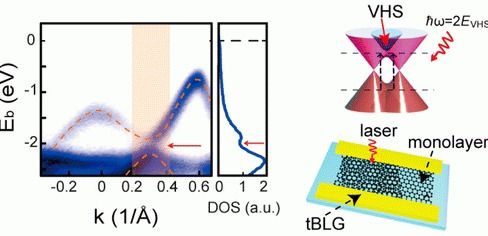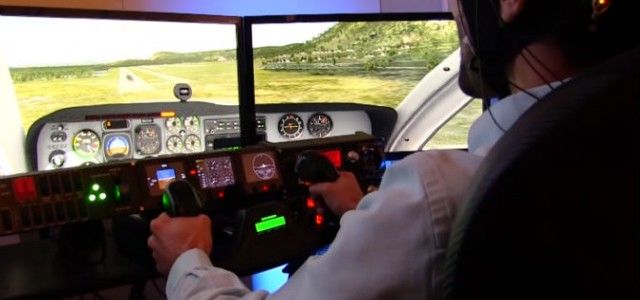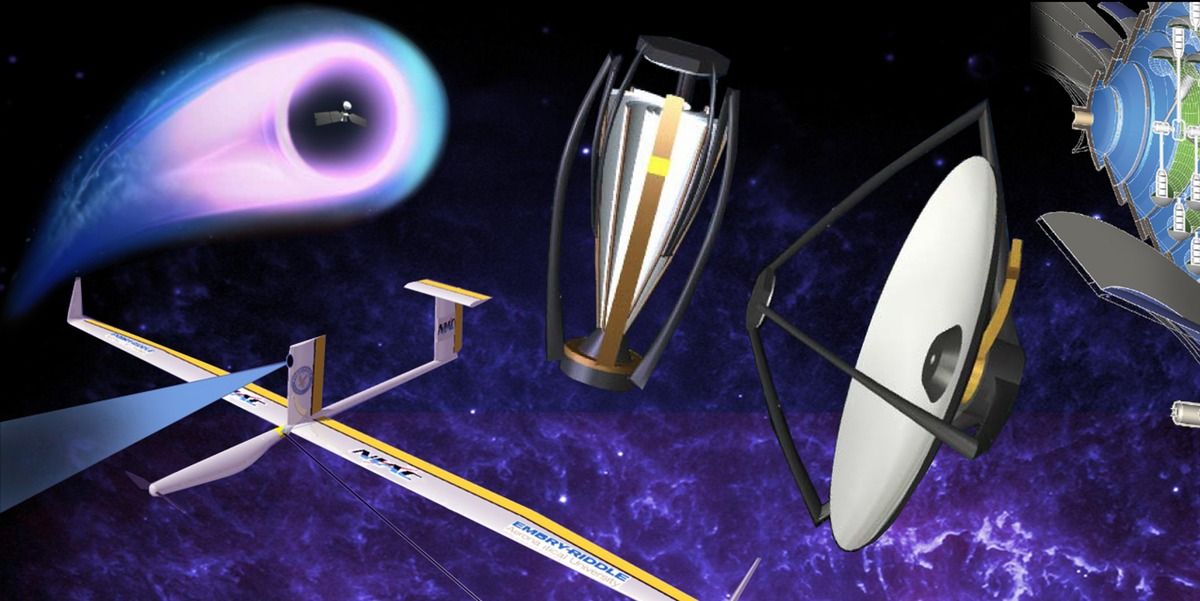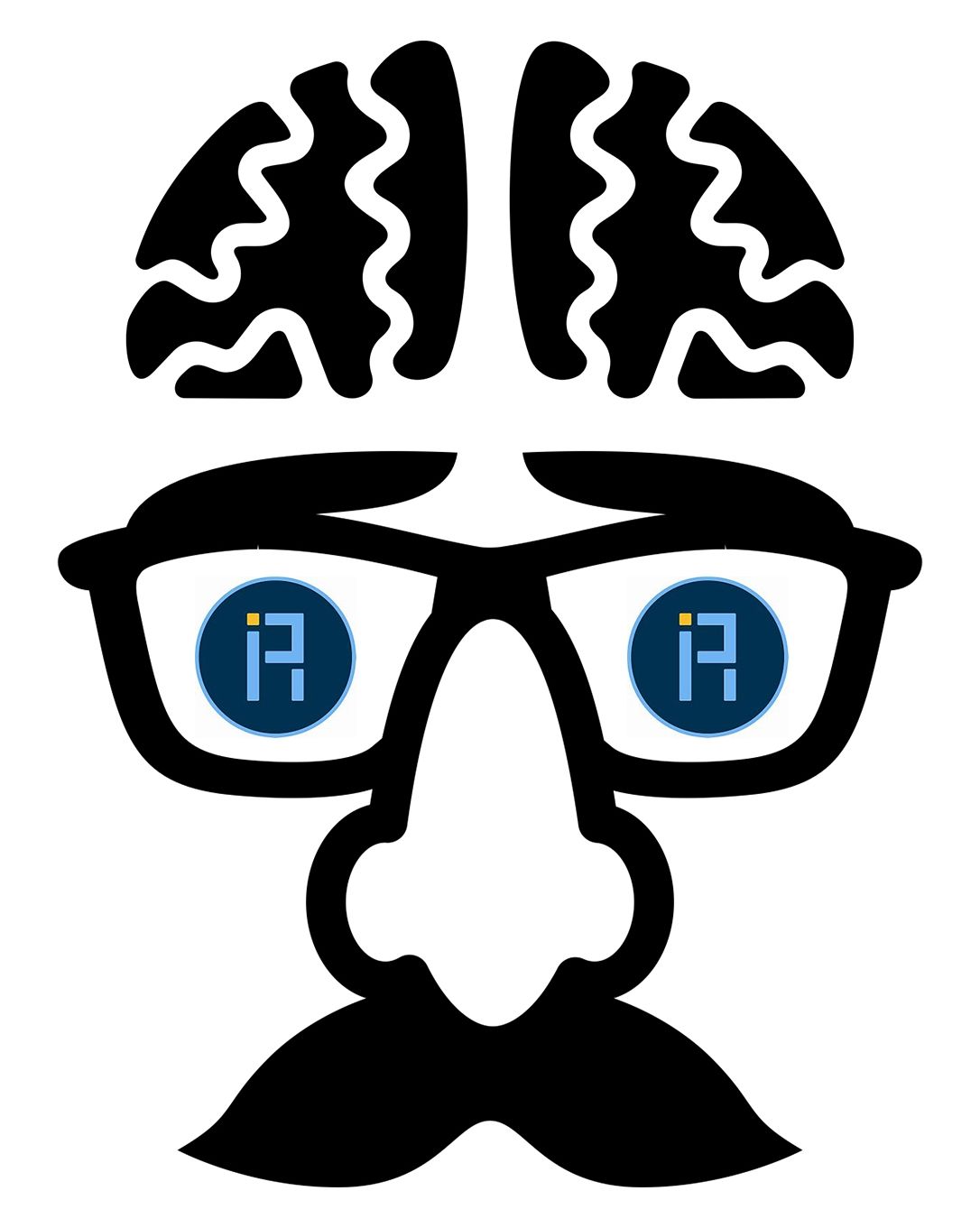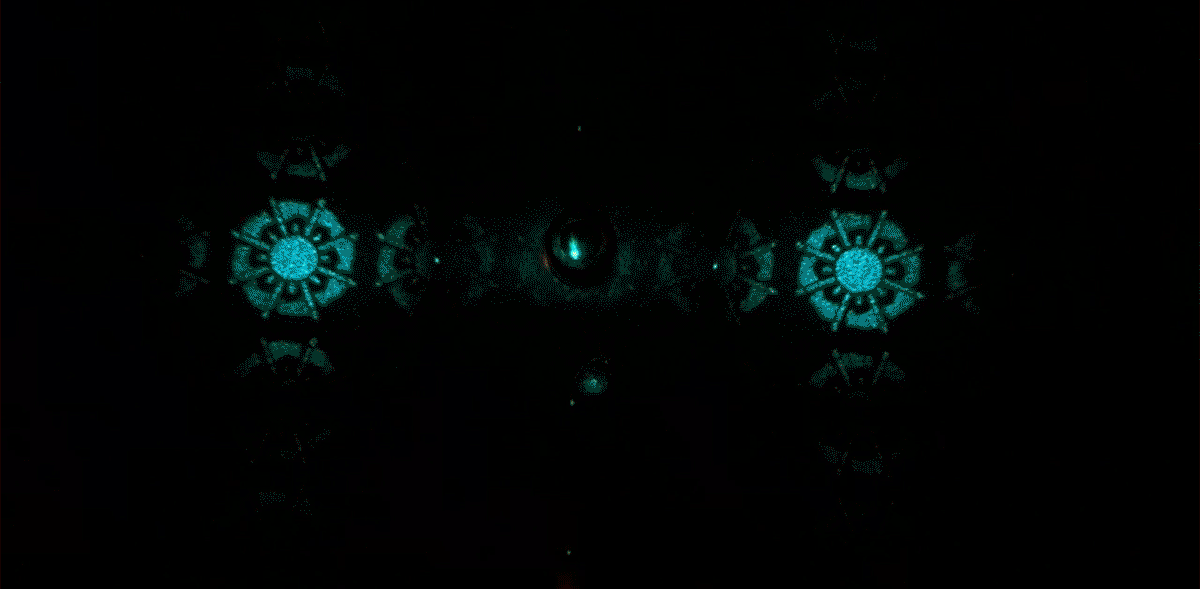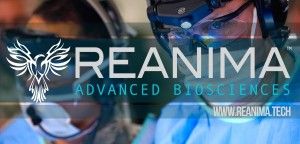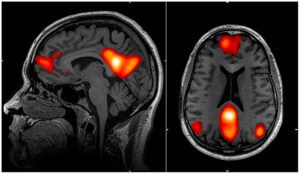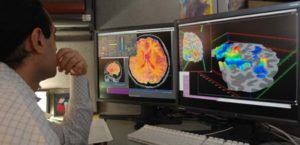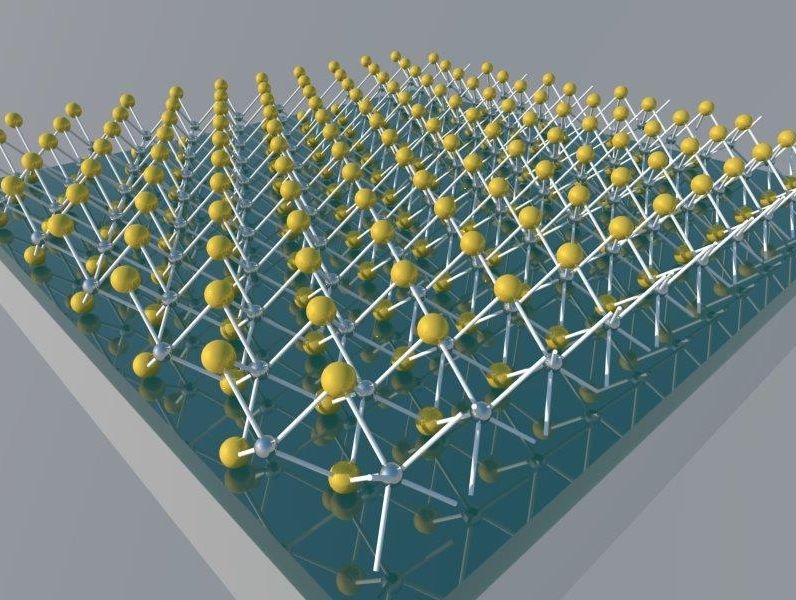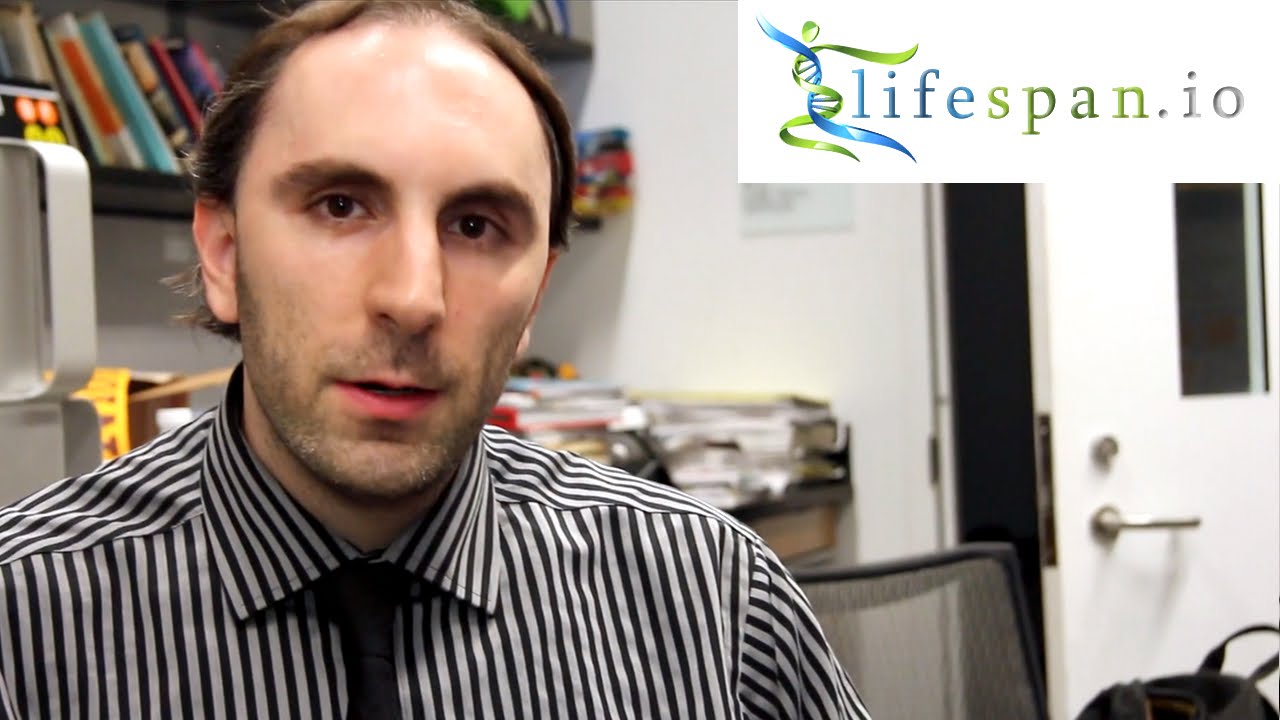Twisted bilayer graphene (tBLG) with van Hove Singularity (VHS) has exhibited novel twist-angle-dependent chemical and physical phenomena. However, scalable production of high-quality tBLG is still in its infancy, especially lacking the angle controlled preparation methods. Here, we report a facile approach to prepare tBLG with large domain sizes (100 μm) and controlled twist angles by a clean layer-by-layer transfer of two constituent graphene monolayers. The whole process without interfacial polymer contamination in two monolayers guarantees the interlayer interaction of the π-bond electrons, which gives rise to the existence of minigaps in electronic structures and the consequent formation of VHSs in density of state. Such perturbation on band structure was directly observed by angle-resolved photoemission spectroscopy with submicrometer spatial resolution (micro-ARPES). The VHSs lead to a strong light–matter interaction and thus introduce ∼20-fold enhanced intensity of Raman G-band, which is a characteristic of high-quality tBLG. The as-prepared tBLG with strong light–matter interaction was further fabricated into high-performance photodetectors with selectively enhanced photocurrent generation (up to ∼6 times compared with monolayer in our device).
What if low-current electrical brain stimulation could be used to accelerate learning and dramatically reduce training time and costs? The Biological Technologies Office (BTO) of the Defense Advanced Research Projects Agency (DARPA) has awarded HRL Laboratories, LLC, funding for a two-year project in the RAM Replay program to develop a man-portable system to boost learning during waking and memory consolidation during sleep, thereby increasing a person’s ability to quickly integrate and accurately recall information.
According to Dr. Praveen Pilly, project leader and research staff member in HRL’s Center for Neural and Emergent Systems, the team will be the first to employ next-generation electrode-embedded head caps to apply high-definition transcranial current stimulation (HD-tCS) in order to tag specific memories and skills during learning, and to increase the probability of reactivating those neural representations during sleep for improved consolidation. “We’ll develop a first-of-its-kind cognitive model of memory replays during sleep/wake stages to predict task performance that can be personalized to control the stimulation intervention for each user,” said Pilly.
Dr. Greg Irving, a Clinical Lecturer from the University of Cambridge, recently authored a research project on the potential impact of blockchain technology on scientific research. While the use is not novel in principle, it underscores the very reason blockchain was created.
Why Scientific Research?
Irving, and rightfully so, says that in order to truly trust scientific research the reader’s must know that the content and subsequent conclusions of the research has maintained its integrity throughout editing and publishing. The author references “outcome switching, data dredging, and selective publication” as just a some of the potential pitfalls that can result in bastardized research. How then can researchers increase the trust that their research is has not been tampered with? In response Irving writes.
IARPA’s Christmas List :
• Brain computer interfaces to enhance cognitive processing or increase bandwidth of human-machine interactions.
• Computational social policy.
• Reliable, real-time feedback methods for assessing human judgment and reasoning.
• Methods for assessing capability and intent to develop weapons of mass destruction.
• Methods for assessing capability and intent to leverage cyber capabilities against U.S. critical infrastructure.
Holograms are a ubiquitous part of our lives. They are in our wallets—protecting credit cards, cash and driver’s licenses from fraud—in grocery store scanners and biomedical devices.
Even though holographic technology has been around for decades, researchers still struggle to make compact holograms more efficient, complex and secure.
Researchers at the Harvard John A. Paulson School of Engineering and Applied Sciences have programmed polarization into compact holograms. These holograms use nanostructures that are sensitive to polarization (the direction in which light vibrates) to produce different images depending on the polarization of incident light. This advancement, which works across the spectrum of light, may improvement anti-fraud holograms as well as those used in entertainment displays.
Fox 29 — Good Day Philadelphia
http://www.fox29.com/140735577-video
NBC TV 10
http://www.nbcphiladelphia.com/news/local/Zombies-from-Phill…65101.html
CNN en Espanol
http://cnnespanol.cnn.com/video/cnnee-encuentro-intvw-joel-o…-cerebral/
The future of movies and manufacturing may be in 3D, but electronics and photonics are going 2-D; specifically, two-dimensional semiconducting materials.
One of the latest advancements in these fields centers on molybdenum disulfide (MoS2), a two-dimensional semiconductor that, while commonly used in lubricants and steel alloys, is still being explored in optoelectronics.
Recently, engineers placed a single layer of MoS2 molecules on top of a photonic structure called an optical nanocavity made of aluminum oxide and aluminum. (A nanocavity is an arrangement of mirrors that allows beams of light to circulate in closed paths. These cavities help us build things like lasers and optical fibers used for communications.)
Check out LEAF President Keith Comito explain the origin of Lifespan.io and why crowdfunding research to extend healthy lifespan is both important and exciting.
Our current campaign is here: https://www.lifespan.io/campaigns/the-major-mouse-testing-program/ and there will be more to follow soon! Connect with us on social media and subcribe on YouTube to stay informed. #CrowdfundTheCure #LifespanIO
LEAF President Keith Comito explains the origin of Lifespan.io — a crowdfunding platform specifically for biomedical research aimed at extending healthy human lifespan. Learn more, and help us Crowdfund the Cure for Aging: https://www.lifespan.io
